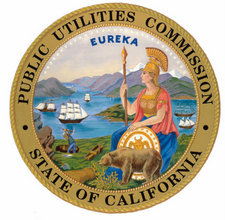San Francisco, CA…The California Public Utilities Commission (CPUC) today addressed the 2017 wildfires in multiple proceedings. The CPUC opened a proceeding to consider fines and penalties against Pacific Gas and Electric Company (PG&E) for 2017 wildfires, and ordered the utility to create a mobile application that empowers the public to report utility pole issues. The CPUC also adopted a methodology to conduct a financial “Stress Test” per Senate Bill (SB) 901 (Dodd).

The proceeding to consider fines and penalties opened today will evaluate the findings in the CPUC’s Safety and Enforcement Division’s (SED) investigation into whether PG&E violated any rules, regulations, or requirements pertaining to the maintenance and operation of its electric facilities that were involved in igniting fires in its service territory in 2017. SED’s report says that PG&E failed to follow industry best practices, and that there were various deficiencies in PG&E’s Vegetation Management practices and procedures and equipment operations in severe conditions. The CPUC directed PG&E to provide a report on various aspects of its operations of its electric facilities and to take immediate corrective action.
“PG&E’s violations during the 2017 fire siege are extensive and disturbing, and go to basic requirements, such as the failure to maintain adequate records,” said Commissioner Clifford Rechtschaffen. “We will consider all appropriate sanctions in response.”
Today’s decision also adopts a fire mitigation measure that employs technology to empower the public to report safety concerns. The decision orders PG&E to create a downloadable mobile application that customers can use to report safety concerns with utility poles. The public will be able to send pictures of the utility poles in question to a database maintained by PG&E. The database would include GIS coordinates, attachments, and operations and maintenance records.
“The app is our way of crowdsourcing public safety and helping reduce the risk of wildfires,” said CPUC President Michael Picker. “PG&E must develop the mobile app and the database at shareholder expense.”
SED’s report and supporting attachments will be available in 10 business days and posted on the CPUC’s website.
The document voted on is available at: http://docs.cpuc.ca.gov/PublishedDocs/Published/G000/M303/K773/303773212.PDF.
Separately, the CPUC adopted a framework to consider a utility’s financial status and determine the maximum amount a company can pay for 2017 wildfire costs without harming ratepayers or materially impacting a company’s ability to provide adequate and safe service, as required by law.
“In SB 901, the Legislature directed the CPUC to act quickly on numerous fronts,” said President Picker. “Today we adopt a methodology to allocate costs resulting from fires in 2017. California utilities, which are not in active Chapter 11 proceedings, can access this methodology in future applications for cost recovery. This decision builds on decisions earlier this year on Wildfire Mitigation Plans, and executive compensation. The continued threat of wildfires to our homes, businesses, and infrastructure, requires the CPUC to continue our work to mitigate fires, and adapt to a dynamic climate.”
Added Commissioner Genevieve Shiroma, “The CPUC’s decision on the stress test to comply with SB 901 includes essential ratepayer protections while ensuring that utilities are able to access the capital necessary to invest in infrastructure and resources to maintain safe and reliable service.”
Utilities who request recovery of costs and expenses from wildfires in 2017 will follow the Stress Test Methodology adopted today.
A utility that has filed for relief under chapter 11 of the Bankruptcy Code may not access the Stress Test to recover costs in an application under section 451.2(b), because the CPUC cannot determine the company’s “financial status,” which includes, among other considerations, its capital structure, liquidity needs, and liabilities, as well as its capacity to raise additional debt, cash, or resources that are reasonably available to the utility, as required by section 451.2(b).
The proposal voted on is available at: http://docs.cpuc.ca.gov/PublishedDocs/Efile/G000/M294/K815/294815603.PDF.
Documents related to this proceeding are available at: https://apps.cpuc.ca.gov/apex/f?p=401:56:0::NO:RP,57,RIR:P5_PROCEEDING_SELECT:R1901006.
The CPUC regulates services and utilities, safeguards the environment, and assures Californians’ access to safe and reliable utility infrastructure and services. For more information on the CPUC, please visit www.cpuc.ca.gov.
###


